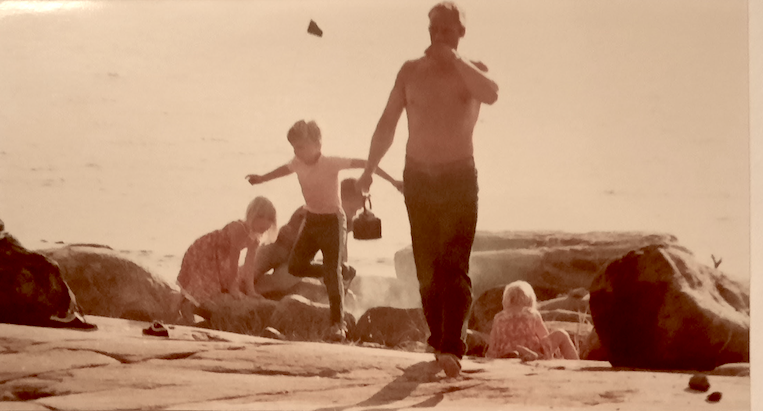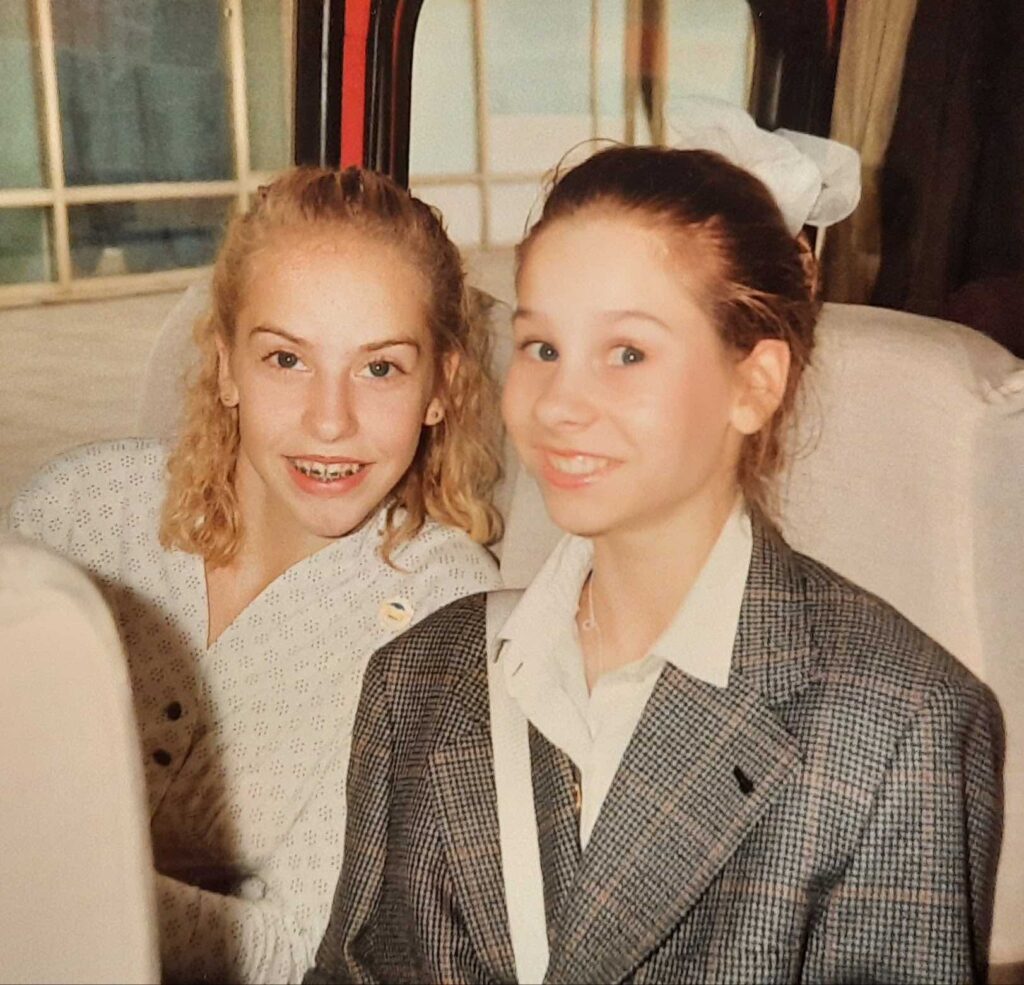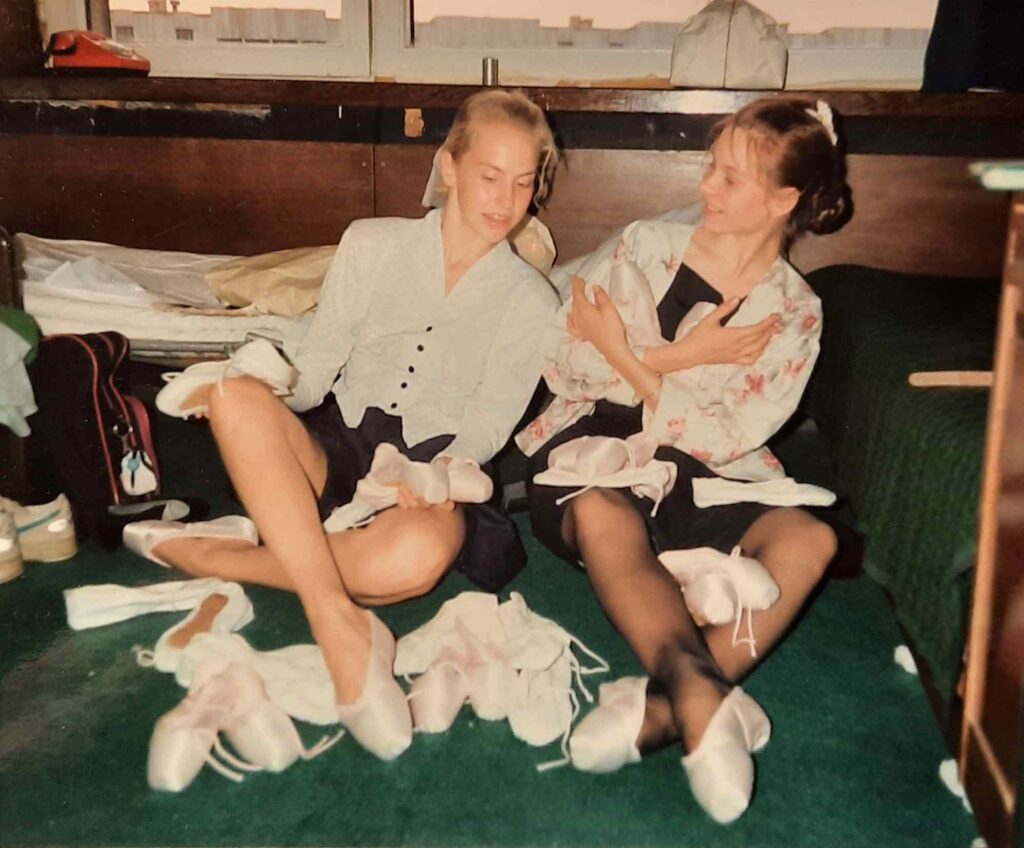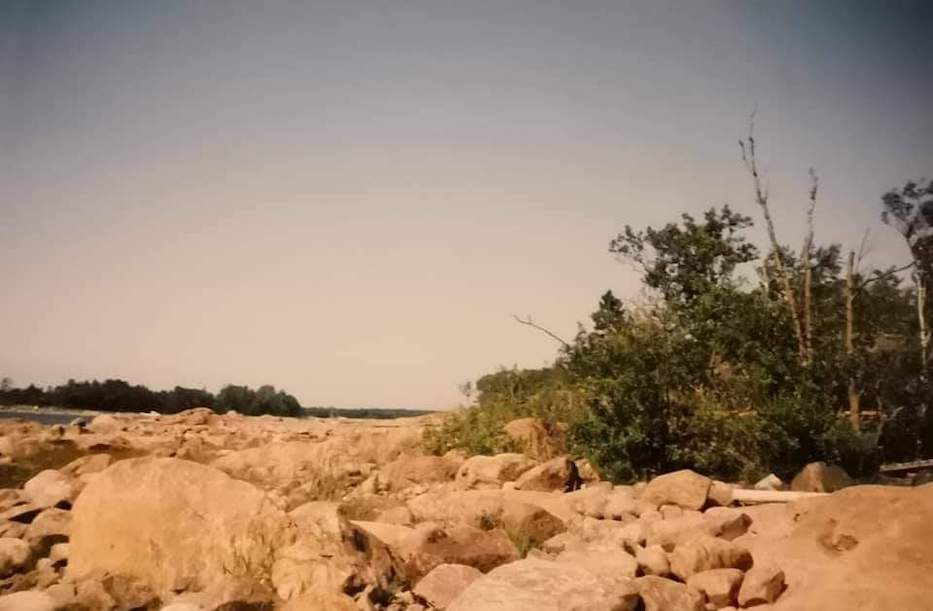Raisa Foster
Under history, memory and forgetting.
Under memory and forgetting, life.
But writing a life is another story.
Incompletion.
– Paul Ricoeur
Starting as a senior grant researcher in the Re-connect / Re-collect project at the beginning of October brought in to view connections between my childhood memories and Cold War histories, and my life as an artist and a scholar. I have to admit that I have never been interested in history; however, I have always been fascinated by memories: autobiographies of artists, TV series based on true stories, photo albums of my childhood, collective remembering with my school friends. The forgetting and the excitement of discovering the past, recognizing shared stories, and reconstructing the now – the memories as vivid as the presence in my sentient body.

It was a lucky and happy coincidence that I came to know Zsuzsa Millei and got involved with this creative and timely project. In short: I ran into my former student who told me that Zsuzsa had heard my talk in Helsinki last year and that she had found my arts-based research work, dealing with eco-social justice, interesting. At the time, I was in a bit of a dark place – not just because of the covid-19 situation but because I was unemployed and had had no luck with any of my artist grant or research funding applications. I was about to give up my passion for arts-based research and start looking for something else in my life. Luckily my former student pushed me to contact this professor, whom I did not know before. When I then met Zsuzsa and Nelli in person and Iveta on-line, I was genuinely surprised by how warmly they welcomed me to the project. Today, when life – not just in Academia but more broadly in society – is more and more built on competition and divides, nothing feels better than being accepted by colleagues who recognize multiple perspectives and allow different talents to come together. In the Re-connect / Re-collect project, I have an opportunity to combine my diverse interests and expertise in arts and educational research. I am particularly interested in studying how the creation of collective memory stories works as the pedagogy of recognition and how the phenomenological understanding of the body can assist in recalling individual and collective memories. Ultimately, I aim to understand how memory work can initiate our understanding and ethical considerations towards more ecosocially sustainable practices in the future.

As the project evoked my childhood memories, I started to reflect on my identity and the moments that may carry special meanings for who I have become as an artist, scholar – and human animal. The typical question, “where are you from?” always troubles me. I was born on the west coast of Finland but then moved to central Finland when I was only two years of age. I lived my whole childhood and youth in the same house in a mid-size town, but I still do not feel that I am “from” that place. But when I visit the west coast, I feel at home. I remember the summer days playing with my cousins at my grandpa’s summer cottage, the sound of the gentle waves of the Baltic sea, the smell of the sea breeze, the rocks under my feet. The lake shores in my current home town Tampere do not touch my body the same way.
I started to do ballet when I was four. My teacher was an exquisite personality. She had a career in theatres in the USA, and taught me how to perform, not just the correct steps but rather how to shine on stage and capture the audience’s attention. When I was 14, my best friend and I secretly started to take ballet classes at another dance school. The ballet teacher had been trained in the world-famous Vaganova Institute in Leningrad. He had unquestioned authority over us; in almost every class someone was crying, but we “knew” that we had to fight harder if we wanted to become like our (s)heroes. When I came home from school, I watched hours and hours of Natalia Makarova’s The Ballerina TV-series that I had recorded to VHS-tapes. I learned to know the techniques and styles of the most excellent ballet dancers. Of course, they were all Russian-trained, but many of them had emigrated to the West; Makarova herself, Mikhail Baryshnikov, Rudolf Nureyev, and many more. I learned that without Душа “dusha” (Russian for ‘soul’), you could not become a real ballerina, and only the Russian dancers had dusha. So, my friend and I desperately tried to copy the Russian stars. We visited Leningrad with our mums and saw a ballet performance, Tchaikovsky’s and the most famous choreographer, Maurice Petipa’s graves. We bought ballet shoes and fabric for the hair bows that the beautiful Russian girls were wearing. Ballet became the only thing in our lives, and we decided to leave our American-influenced dance school and start the “proper” Vaganova technique training. The next year my a-year-older friend got into the Finnish National Ballet School, and the following year I was accepted to the Swedish royal ballet school in Stockholm.

My journey from the ballerina days to my current body and movement interests – as they are defined in phenomenology – has been long. In 2001, I became a Finnish language and literature teacher, and I was also teaching drama in a secondary school. In 2004, I studied the basic studies of drama and theatre and was sucked into the world of movement improvisation. That opened up a whole new approach to movement for me, and I was eager to study more. I ended up studying dance animateuring at the Victorian College of the Arts at the University of Melbourne, Australia. That year changed utterly not only my understanding of dance but also pedagogy. Suddenly, the learning was not about reaching some pre-established goals but became the personal investigations of various phenomena. I started to write a proposal for doctoral studies in education while I was still living in Australia and got accepted to the University of Tampere, where I completed my Ph.D. in 2012.
My doctoral project was an arts-based study that I conducted with a music teacher/composer and five young men. I was interested in knowing what these young men would tell about themselves if they were only given a chance to do so. I was very annoyed about how the media portrayed young men: they were only drunk drivers, school shooters, and trouble-makers. I wanted to tell another story – or better, I tried to portrait multiple stories. I wanted to challenge the stereotypical narratives of men and present a montage that would evoke diverse sensibilities, emotions, memories, and wishes for a better future. The project was a huge success, and the stage performance Katiska created through improvisations was performed about 40 times in 2008–2015 in Finland and some other European countries. My doctoral dissertation entitled The Pedagogy of Recognition. Dancing Identity and Mutuality was based on this artistic project.

After my doctoral studies, I have extended my research focus from social justice issues onto ecological concerns. In 2015–2017, I led an independent arts-based research project, Art-Eco – towards empathetic-ecological humanity. We were particularly interested in art and art education possibilities in creating a more socially and ecologically just future. I have since then continued to develop educational theories and artistic practices that better recognize how we as humans live in an interdependent relationship with the rest of nature. In this task, I have to accept my own identity as a multidisciplinary artist and researcher – even if it often feels that I am expected to choose one over the other. To gain an in-depth understanding of my participation in the more-than-human world, I must let go of the artificial boundaries between subject-object, self-other, human-animal, culture-nature, science-art and ask: What can I learn from the stories of my body against the rocks of the west coast or my ballet remnants? What can I learn from the memories I would rather forget? What can I learn about life in the entanglement of past, present, and future in the stories we share?
